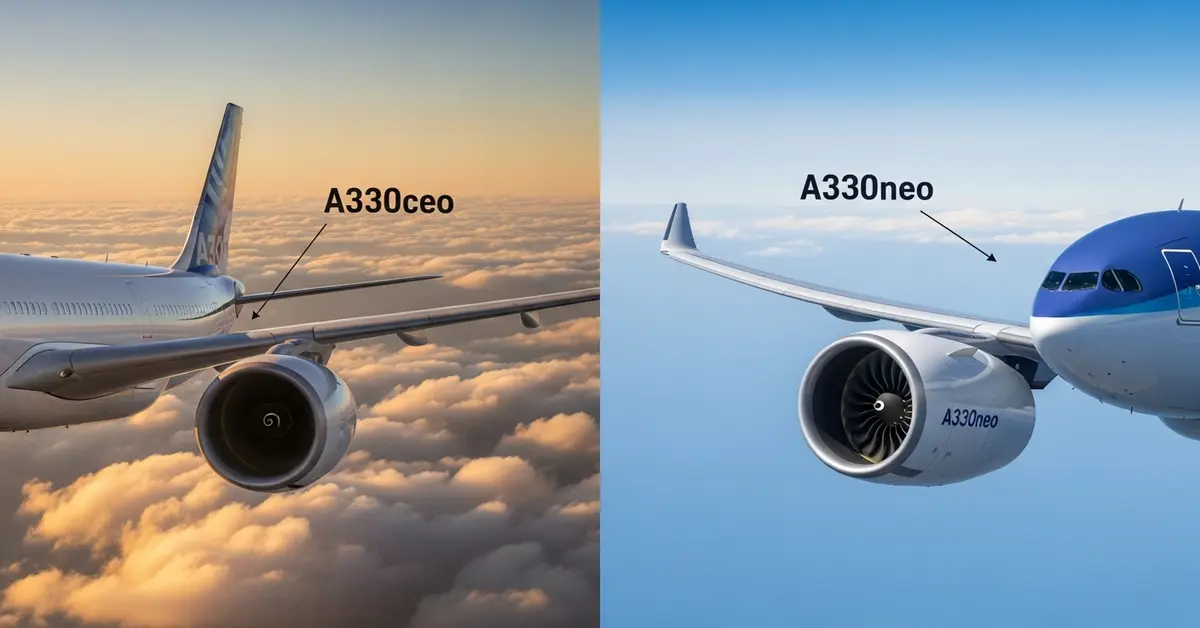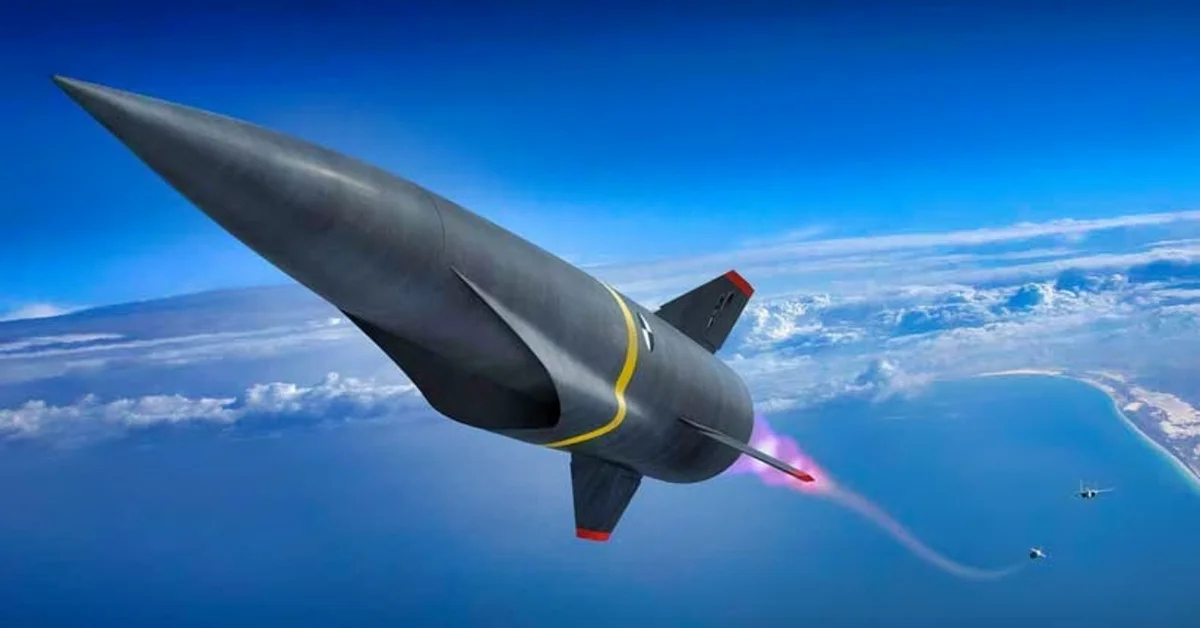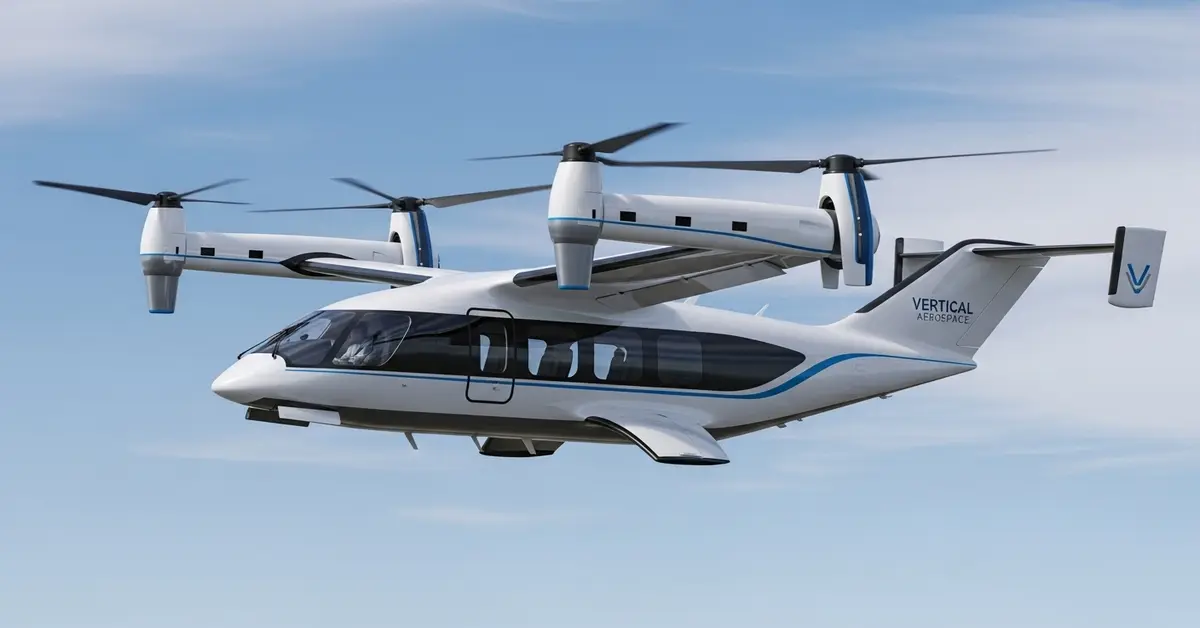The Airbus A330ceo (Current Engine Option) and A330neo (New Engine Option) are two generations of the same wide body aircraft family. The A330ceo, introduced as the original variant of the A330 family, operates using earlier generation engines such as the Rolls Royce Trent 700 or the General Electric CF6. In contrast, the A330neo is a modernized version featuring new, fuel efficient Rolls Royce Trent 7000 engines, larger sharklet wingtips for better aerodynamics, and an upgraded Airspace cabin for enhanced passenger comfort, making it more economical and environmentally friendly for long haul operations. These updates give it longer range, lower fuel burn, and quieter operation compared to the A330ceo, which uses older generation engines like the Trent 700 or PW4000.
A330ceo (Current Engine Option)
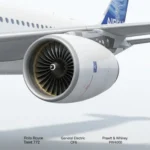
Airbus introduced the A330ceo as the original wide body variant, bringing it into commercial service in the early 1990s. It uses trusted engines like:
- Rolls Royce Trent 772 and 772B
- General Electric CF6
- Pratt & Whitney PW4000
These engines gave airlines reliable performance, reasonable fuel use for their time, and a smooth flying experience. But as years passed, airlines wanted Better fuel efficiency, Lower noise, and Greener operations, especially since newer aircraft like the Boeing 787 and Airbus A350 were offering more advanced features.
A330neo (New Engine Option)
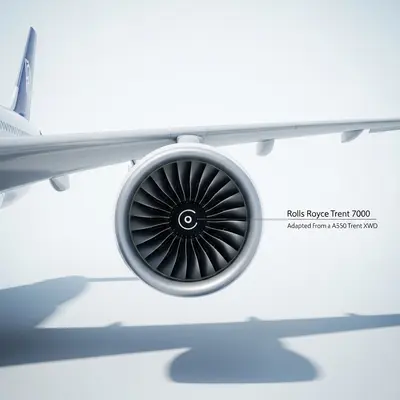
The A330neo is the refreshed version launched around 2014, which brings key upgrades:
Main Changes
- Rolls Royce Trent 7000 engines, adapted from the A350’s Trent XWB
- New wing design, including improved winglets for better lift and less drag
- Updates to systems and optional cabin improvements
Who Designed the A330ceo?
The A330ceo was designed by Airbus, a European aircraft manufacturer formed through a collaboration between France, Germany, the United Kingdom, and Spain. The design and development were managed from Airbus’s headquarters in Toulouse, France, with major contributions from engineering teams across Europe. In the late 1980s, Airbus developed the A330ceo to provide airlines with a modern, twin engine wide body aircraft designed for long distance travel. The aircraft was officially launched into service in the early 1990s, when Air Inter, a French domestic carrier, became its first commercial operator. Its success helped Airbus grow its presence in the long-haul market.
Who Designed the A330neo?
The A330neo was also designed by Airbus, as a strategic upgrade to the A330ceo to meet new market demands for better fuel efficiency and lower operating costs. The development was led by Airbus engineers in Toulouse, with coordinated work from its international design and production teams across Europe. The A330neo was officially introduced by TAP Air Portugal, which became the launch customer when the aircraft entered commercial service in 2018. Airbus designed the A330neo as a cost effective modernization, offering airlines improved technology without the need for an entirely new aircraft design.
Range Capabilities of A330ceo vs A330neo
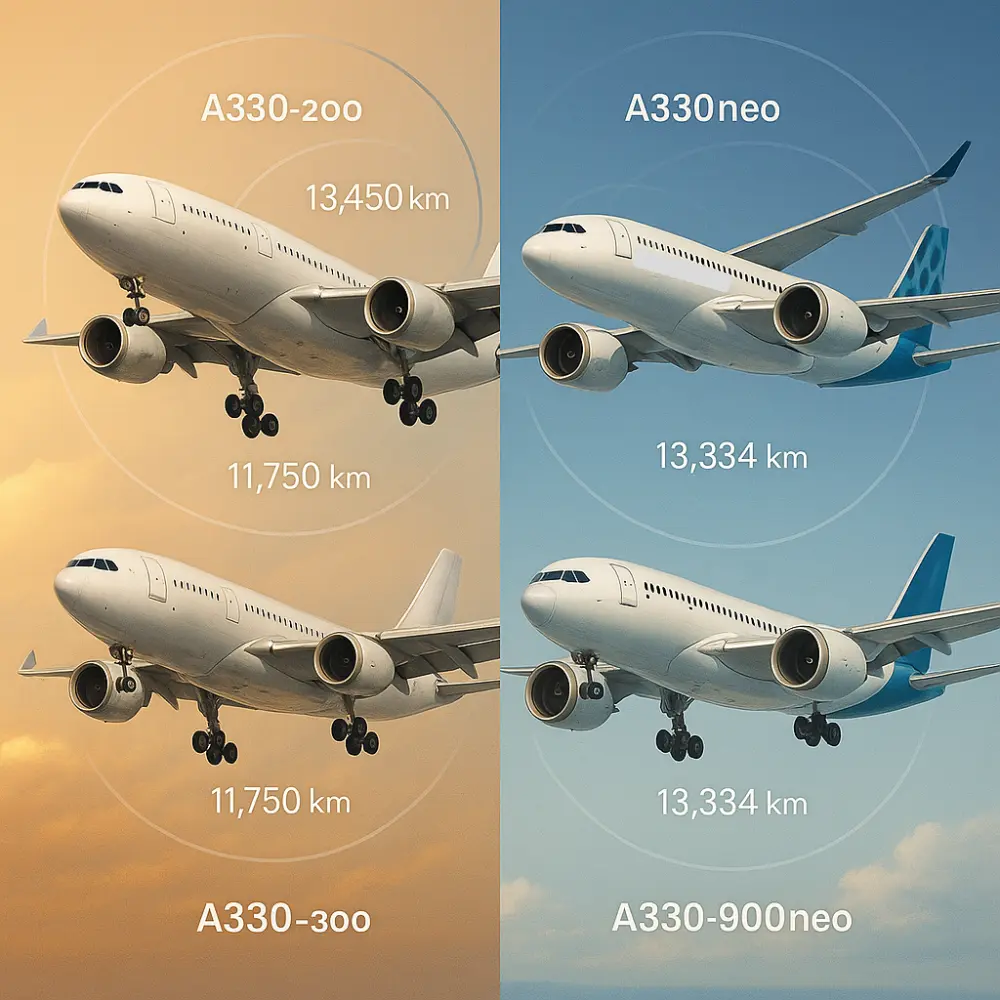
1. A330ceo (Current Engine Option)
- The A330ceo, which includes models like the A330 to 200 and A330 to 300, was designed in the 1990s for long haul efficiency.
- A330 to 200 has a maximum range of approximately 13,450 km (7,250 nautical miles).
- A330 to 300 offers a slightly shorter range of around 11,750 km (6,350 nautical miles) due to its larger passenger capacity and structural differences.
These aircraft were ideal for long international routes but limited when ultra long haul flights were needed.
2. A330neo (New Engine Option)
- The A330neo, launched in the 2010s, introduced improvements in range thanks to more efficient engines, aerodynamics, and increased fuel capacity.
- The A330 to 800neo delivers a remarkable range of up to 13,334 kilometers (about 7,200 nautical miles), effectively matching or exceeding the performance of the earlier A330 200.
- A330 to 900neo can fly approximately 13,334 km (7,200 nautical miles) as well, with better efficiency than the A330 300.
The neo models enable airlines to operate longer, thinner routes without sacrificing fuel efficiency or passenger comfort.
A330ceo Engine Type and Fuel Usage
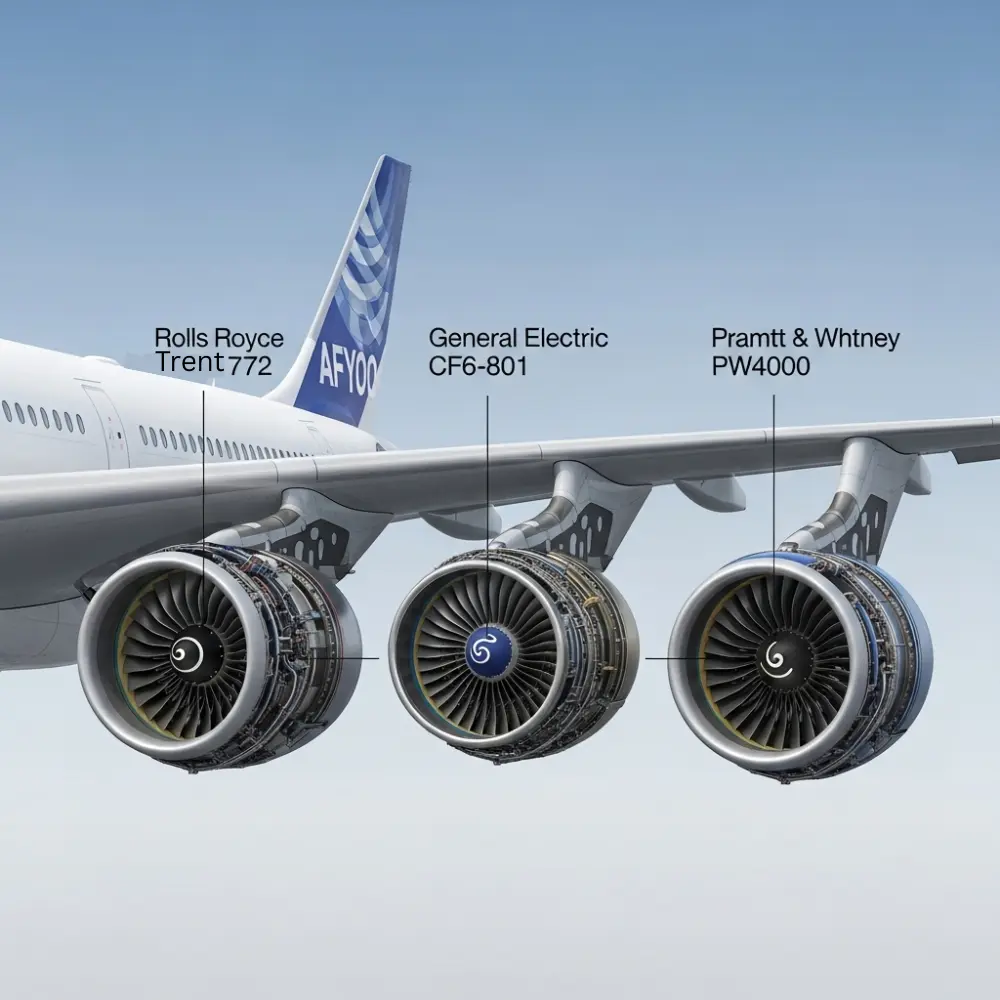
The A330ceo was originally equipped with a choice of three engine types the Rolls Royce Trent 772, General Electric CF6-80E1, and Pratt & Whitney PW4000. These engines represented the standard for wide body aircraft efficiency in the 1990s, offering dependable performance across medium to long haul routes. While suitable for their time, these engines have since been surpassed in terms of fuel efficiency. As a result, the A330ceo’s fuel consumption reflects older design standards, with higher overall trip fuel burn compared to newer models.
A330neo Engine Type and Fuel Usage
The A330neo features the advanced Rolls Royce Trent 7000 engine, which incorporates a modern core derived from the Trent 1000 used on the Boeing 787. It boasts a higher bypass ratio and improved thermal efficiency, making it significantly more fuel efficient. This engine, combined with aerodynamic upgrades and increased seating capacity, allows the A330neo to achieve around 12% lower fuel burn per trip and up to 25% lower fuel consumption per seat compared to the ceo. These improvements make the A330neo a far more economical and environmentally friendly choice for airlines operating long-haul flights.
A330ceo:Engine Overview
Offered with three engine choices:
- Rolls Royce Trent 772
- General Electric CF6-80E1
- Pratt & Whitney PW4000
- Built with 1990s engine technology, suitable for long haul flights at the time.
- Engines delivered reliable performance but had higher fuel consumption.
- These engines had a lower bypass ratio than modern ones, which made them less fuel efficient.
- By today’s standards, the engines generated more noise and higher emissions during operation.
A330neo: Engine Upgrade
- Uses a single engine type Rolls Royce Trent 7000
- Based on the newer Trent 1000 core (used on Boeing 787)
- Designed with a higher bypass ratio for better fuel savings
- The A330neo burns approximately 12% less fuel per flight compared to the A330ceo, making it more efficient.
- Achieves up to 25% lower fuel use per seat due to increased efficiency and capacity
- Quieter and produces fewer emissions, making it more eco friendly
- Supports longer range and lower operating costs for airlines
Airbus A330ceo, A330neo & More
Airbus offers a diverse lineup of aircraft designed to meet the needs of both commercial and military aviation. From long range wide body jets to compact single aisle planes and military transporters, each model reflects Airbus’s focus on performance, innovation, and operational efficiency across different flight missions.
- The A330ceo (Current Engine Option) is one of Airbus’s earlier wide body aircraft, known for its reliability and versatility, mainly used for long haul routes.
- The A330neo (New Engine Option) is a modernized version with new engines, offering better fuel efficiency, lower operating costs, and quieter performance.
- The A321neo is a longer, upgraded version of the A320 with powerful engines and extended range, making it popular for medium- to long distance flights.
- The A319neo, the smallest member of the A320neo family, is ideal for shorter routes and airports with space restrictions, while still saving fuel.
- The A400M Atlas is a military transport aircraft designed to carry troops, vehicles, and equipment over long distances, including to rough or unprepared runways.
Together, these aircraft highlight Airbus’s commitment to innovation, efficiency, and meeting the needs of both commercial airlines and military operations.
Fuel Efficiency Comparison
1. The A330ceo runs on older generation engines like:
- Rolls Royce Trent 700
- General Electric CF6 to 80E1
- Pratt & Whitney PW4000
2. The A330neo features the Rolls Royce Trent 7000 engine, which is:
- Based on the Trent 1000 used in the Boeing 787
- Engineered with an expanded fan diameter and a significantly higher bypass ratio
- Equipped with a new nacelle and titanium pylon
Fuel savings of up to 14% per seat are achieved compared to the ceo.
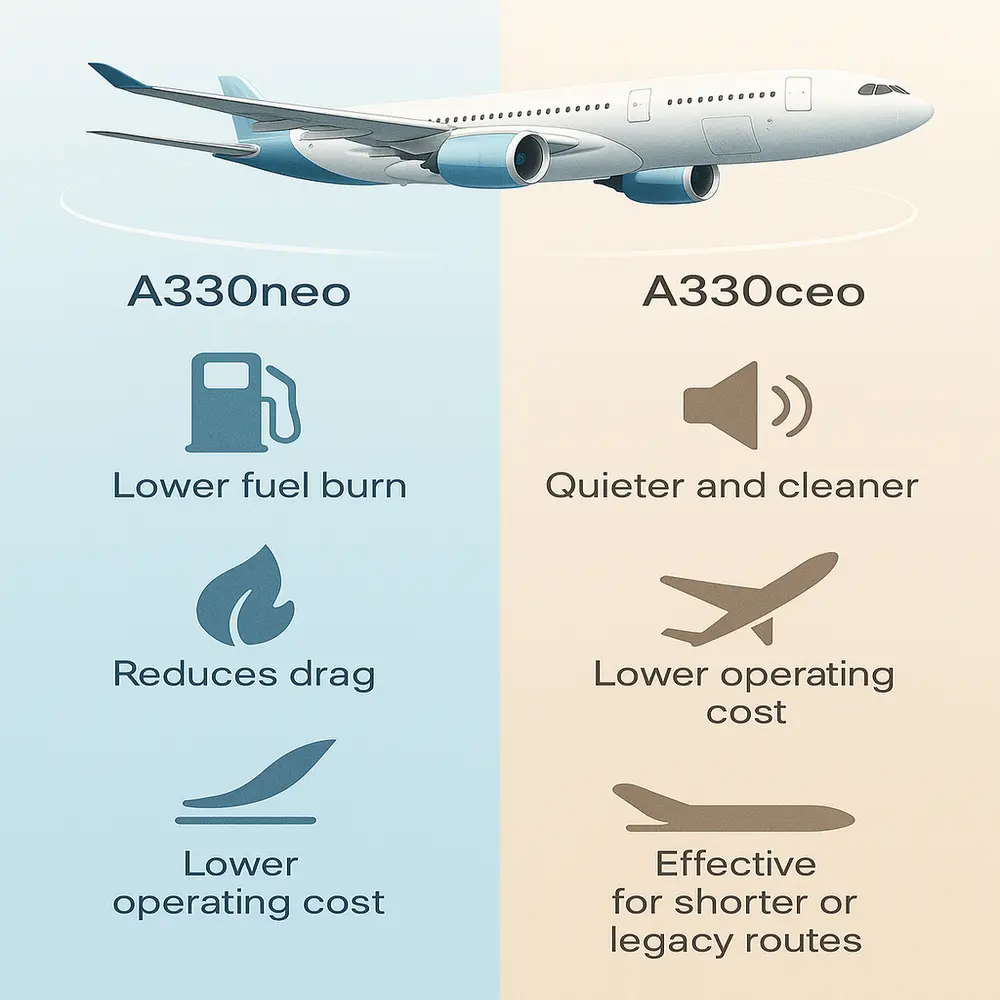
Airbus A330ceo and A330neo Operators
As of June 2025, more than 600 Airbus A330ceo aircraft remain in active service with airlines worldwide, while 162 A330neo jets operate under 21 different carriers. The largest A330neo operators are:
- Delta Air Lines: 36
- TAP Air Portugal: 19
- Condor: 18
- Cebu Pacific: 12
- ITA Airways: 11
Airbus delivered the 100th A330neo (an A330-900) to Condor Flugdienst GmbH on April 11, 2023, leased from AerCap. As of that milestone, the A330neo family served over 200 destinations with 22 airlines worldwide.
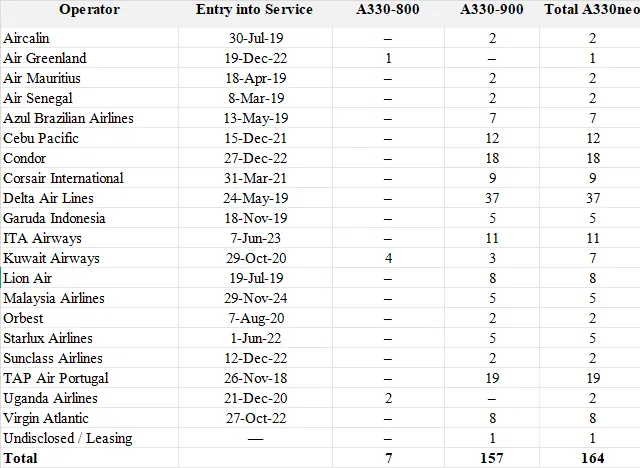
Notable A330ceo Operators (as of 2025)
While Airbus has stopped producing new A330ceo aircraft, hundreds are still flying, particularly in passenger and cargo roles. Here are notable operators of A330ceo aircraft:
- Turkish Airlines: A330 to 200, A330 to 300 (passenger and cargo)
- Lufthansa: A330 to 300
- Air France: A330 to 200
- Delta Air Lines: A330 to 200, A330 to 300
- Korean Air: A330 to 200, A330 to 300
- China Eastern Airlines: A330 to 200, A330 to 300
- Qatar Airways: A330 to 200, partially retired
- Etihad Airways: A330 to 200
- South African Airways: A330 to 200
- Philippine Airlines: A330 to 300 (some converted to cargo)
What Makes the A330neo Better?
- Fuel efficiency: Uses roughly 12% less fuel per flight than the older engines
- Greener emissions: Cuts down CO₂ and NOₓ
- Quieter operation: Significantly lower noise thanks to new engine and acoustic design
- Upgraded wing: Enhances aerodynamic efficiency
- Design & parts commonality: Retains much of the A330ceo architecture, which simplifies training and logistics
A330ceo Market Strategy
Airbus launched the A330ceo (Current Engine Option) in the early 1990s to compete with Boeing in the wide body aircraft market.
Key Goals of the A330ceo Strategy:
- Airbus aimed to fill the gap between narrow body planes like the A320 and large jets like the Boeing 747 or Airbus A340.
- They offered a mid size, twin engine aircraft that could fly long distances using less fuel than older four engine jets.
- Airbus provided a cost effective option for airlines that didn’t need the large size or full range of the Boeing 777 or 747.
- They designed the A330 to share systems with the A340, which helped airlines cut training and maintenance costs.
Why It Worked:
- Airlines trusted its reliability, liked its lower operating costs, and valued its strong performance.
- Pilots could easily switch between different Airbus models due to similar cockpit designs.
- Airbus sold over 1,400 A330ceos, turning it into one of the most successful wide body aircraft in history.
- Airlines used it on medium and long haul routes, especially between smaller city pairs.
- The A330ceo helped Airbus win airline confidence, build strong customer relationships, and grow its global wide body presence.
A330neo Market Strategy:
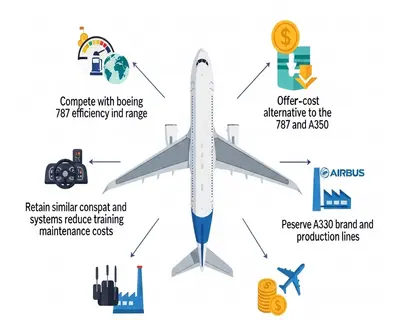
By 2014, the aviation market had shifted. Jet fuel prices stayed high, and Boeing’s 787 Dreamliner caught airline attention with better fuel savings and modern technology.
Airbus responded by developing the A330neo (New Engine Option). Instead of creating a brand new aircraft, Airbus upgraded the A330ceo platform, saving time and money while improving performance.
Key Goals of the A330neo Strategy:
- Airbus wanted to compete with the Boeing 787 in fuel efficiency and flight range.
- They designed the A330neo to be a lower cost alternative to newer aircraft like the 787 and A350.
- They kept the cockpit and systems similar to the ceo version to reduce training time, simplify parts storage, and ease maintenance.
- Airbus protected the A330 brand and kept its production lines active by upgrading rather than replacing.
Strategic Advantages:
- Airlines paid less up front and operated it more cheaply than the 787.
- Airbus added Trent 7000 engines, aerodynamic improvements, and modern cabin designs to boost comfort and efficiency.
- Pilots could transition quickly from the A330ceo to the A330neo.
- Airlines upgraded their fleets easily without changing their entire operations.
- Airbus reduced airline risk by offering a proven design with new upgrades.
Real World Success and Adoption
The A330ceo has seen widespread adoption across the globe, flying with over 100 operators. It served key hubs and emerging markets alike, often becoming the workhorse for transatlantic and Asia Pacific routes. Airlines such as Emirates, Qatar Airways, and Turkish Airlines made extensive use of the A330ceo to expand their networks efficiently.
Meanwhile, the A330neo is steadily gaining market share. As of mid 2025, over 160 units are in service with 21 operators including Delta Air Lines, TAP Air Portugal, and Condor. With over 300 total orders, the A330neo is proving to be a competitive choice for carriers seeking efficiency with lower ownership costs.
Together, both models highlight Airbus’s smart market approach offering upgrades when needed, maintaining fleet compatibility, and delivering real world value to airlines worldwide.
FAQs
1. What sets the Airbus A330ceo and A330neo apart?
Airbus designed the A330ceo with older engines like the Trent 772, CF6, and PW4000, while it built the A330neo with modern Trent 7000 engines, advanced winglets, and an upgraded cabin. These changes make the A330neo quieter, more fuel efficient, and better suited for long haul routes.
2. How much fuel does the A330neo save compared to the A330ceo?
The A330neo burns about 12% less fuel per flight and achieves up to 25% lower fuel use per seat than the A330ceo. Airbus achieved this by improving engine efficiency, refining the aerodynamics, and increasing seating capacity.
3. Can pilots quickly switch from the A330ceo to the A330neo?
Yes, Airbus kept the cockpit layout nearly identical. This design allows pilots to switch between the A330ceo and A330neo with minimal extra training, helping airlines save time and reduce costs.
4. How do seat configurations differ between the two models?
Airlines typically configure the A330ceo to seat 250 to 277 passengers in Business and Economy classes. In contrast, they equip the A330neo to carry 260 to 300+ passengers, often adding Premium Economy. Airbus also improved the A330neo’s cabin with mood lighting, USB ports, and better airflow.
5. Why do many airlines still operate the A330ceo?
Airlines continue to fly the A330ceo because it offers proven reliability, lower purchase costs, and an established support system. For many carriers, it still performs well on certain routes despite newer options being available.
Conclusion
The Airbus A330ceo and A330neo showcase Airbus’s strategic evolution in wide-body aircraft design. Airbus launched the A330ceo in the 1990s to offer airlines a reliable, fuel efficient option for long haul routes. Later, it introduced the A330neo to meet modern demands for lower emissions, quieter operation, and better fuel economy. By upgrading the engines, wings, and cabin, Airbus improved efficiency by up to 25% per seat. Despite the neo’s advancements, many airlines still operate the ceo for its proven reliability and lower acquisition costs. Together, both models highlight Airbus’s ability to innovate while supporting fleet continuity and environmental responsibility.
